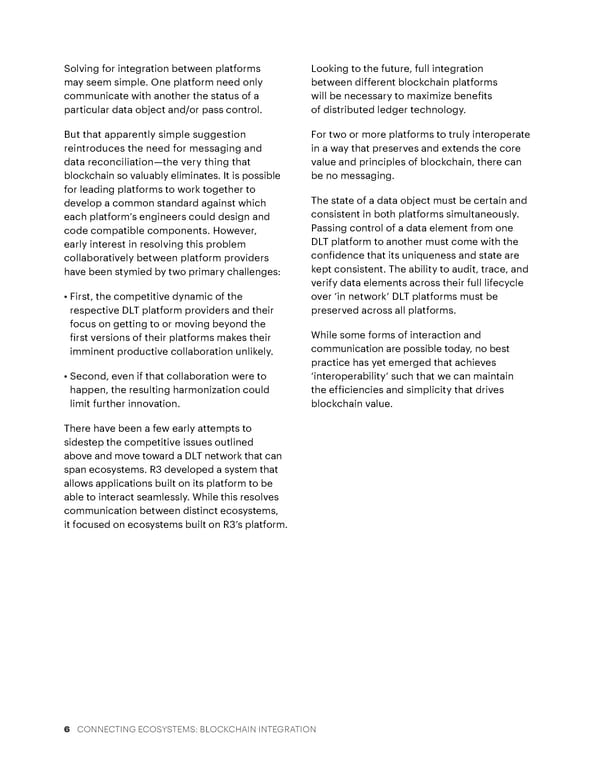Solving for integration between platforms Looking to the future, full integration may seem simple. One platform need only between different blockchain platforms communicate with another the status of a will be necessary to maximize bene昀椀ts particular data object and/or pass control. of distributed ledger technology. But that apparently simple suggestion For two or more platforms to truly interoperate reintroduces the need for messaging and in a way that preserves and extends the core data reconciliation—the very thing that value and principles of blockchain, there can blockchain so valuably eliminates. It is possible be no messaging. for leading platforms to work together to develop a common standard against which The state of a data object must be certain and each platform’s engineers could design and consistent in both platforms simultaneously. code compatible components. However, Passing control of a data element from one early interest in resolving this problem DLT platform to another must come with the collaboratively between platform providers con昀椀dence that its uniqueness and state are have been stymied by two primary challenges: kept consistent. The ability to audit, trace, and verify data elements across their full lifecycle • First, the competitive dynamic of the over ‘in network’ DLT platforms must be respective DLT platform providers and their preserved across all platforms. focus on getting to or moving beyond the While some forms of interaction and 昀椀rst versions of their platforms makes their imminent productive collaboration unlikely. communication are possible today, no best practice has yet emerged that achieves • Second, even if that collaboration were to ‘interoperability’ such that we can maintain happen, the resulting harmonization could the ef昀椀ciencies and simplicity that drives limit further innovation. blockchain value. There have been a few early attempts to sidestep the competitive issues outlined above and move toward a DLT network that can span ecosystems. R3 developed a system that allows applications built on its platform to be able to interact seamlessly. While this resolves communication between distinct ecosystems, it focused on ecosystems built on R3’s platform. 6 CONNECTING ECOSYSTEMS: BLOCKCHAIN INTEGRATION
 Connecting Ecosystems: Blockchain Integration Page 5 Page 7
Connecting Ecosystems: Blockchain Integration Page 5 Page 7